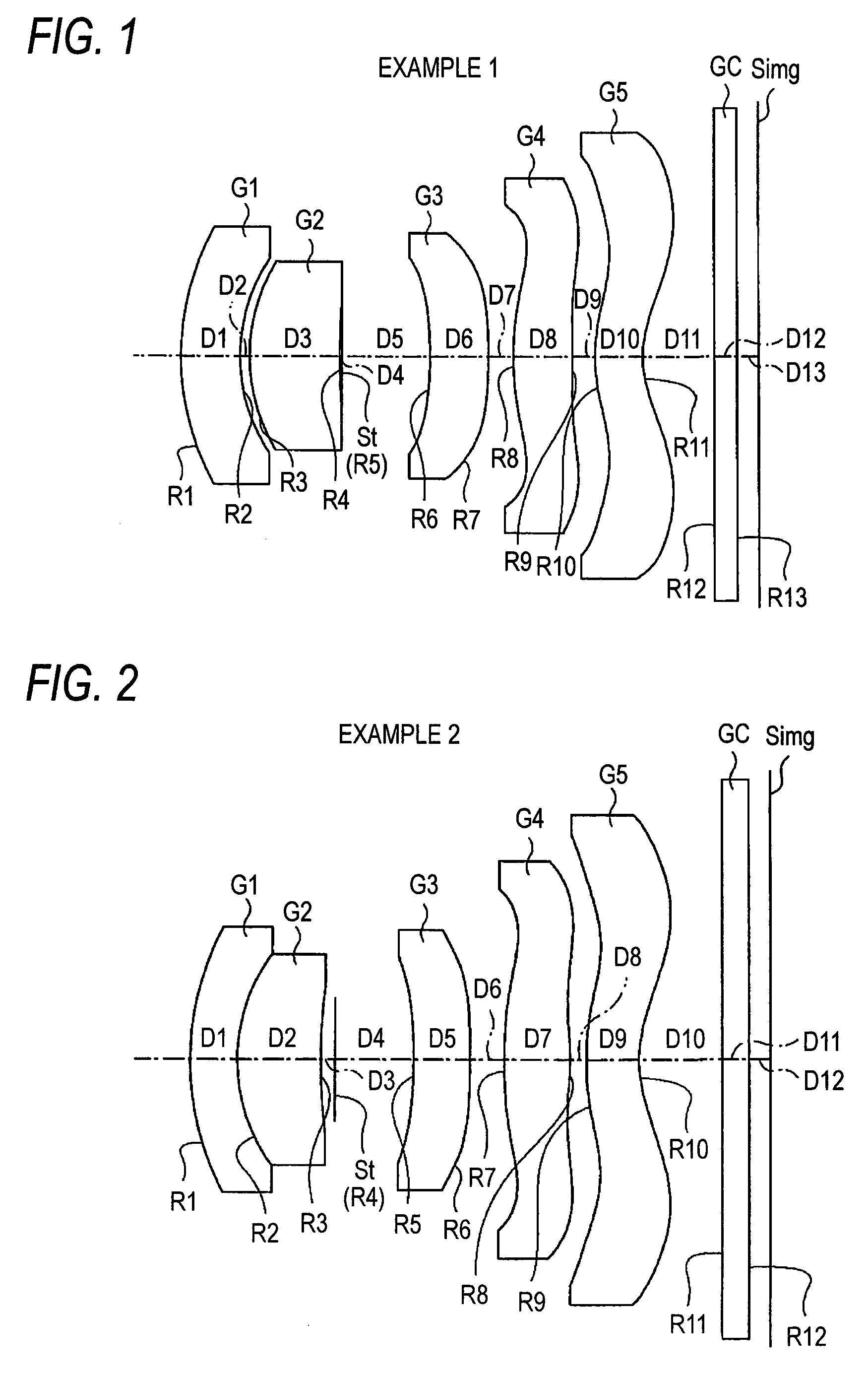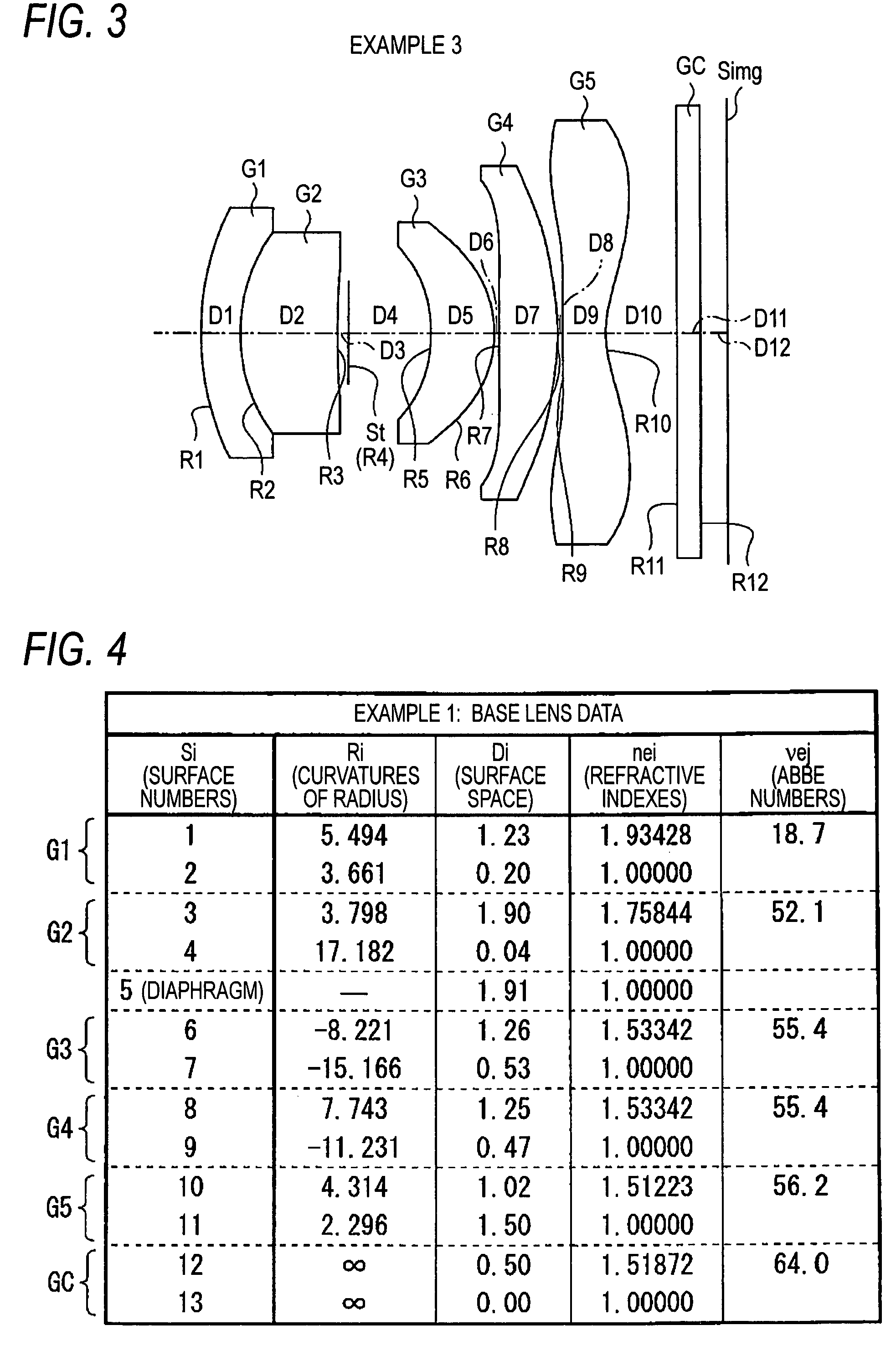Imaging lens and imaging apparatus
a technology of imaging lens and imaging apparatus, which is applied in the field of imaging lens, can solve the problems of reducing the degree of design freedom, the imaging lens described in the patent document is not suitable for the image pickup device which requires a high resolving power, and the chromatic aberration and curvature of the image can be corrected
- Summary
- Abstract
- Description
- Claims
- Application Information
AI Technical Summary
Benefits of technology
Problems solved by technology
Method used
Image
Examples
examples
[0072]Next, specific numerical examples of the imaging lens according to the example of the invention will be described. First to seventh numerical examples will be described altogether below.
[0073]A specific lens data which corresponds to the configuration of the imaging lens shown in FIG. 1 is shown as Example 1 in FIGS. 4, 5. More particularly, a basic lens data is shown FIG. 4, while a data on the aspherical surfaces is shown in FIG. 5. In a column of surface numbers Si of the lens data shown in FIG. 4, the numbers of ith surfaces (i=1 to 13) are shown to which reference numerals are imparted in an ascending order sequentially-from the object side to the image side of the imaging lens with a numeral 1 imparted to a surface of the constituent lens element which lies in an outermost position on the object side of the imaging lens. In a column of curvatures of radius Ri, the values (mm) of curvatures of radius of the ith surfaces from the object side are shown with reference charac...
PUM
 Login to View More
Login to View More Abstract
Description
Claims
Application Information
 Login to View More
Login to View More - R&D
- Intellectual Property
- Life Sciences
- Materials
- Tech Scout
- Unparalleled Data Quality
- Higher Quality Content
- 60% Fewer Hallucinations
Browse by: Latest US Patents, China's latest patents, Technical Efficacy Thesaurus, Application Domain, Technology Topic, Popular Technical Reports.
© 2025 PatSnap. All rights reserved.Legal|Privacy policy|Modern Slavery Act Transparency Statement|Sitemap|About US| Contact US: help@patsnap.com



